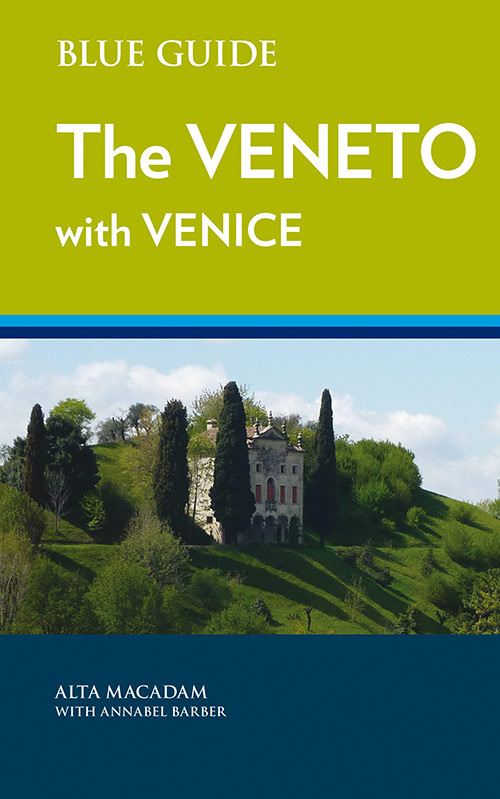
Blue Guide Venice and the Veneto
Blue Guide Must-Haves for Italy
Reviewed by mikelb
Format: Paperback
Having known the more massive Blue Guides of the past (e.g., one for all of Northern Italy), I just recently discovered these smaller, separate regional guides and bought not only this one but also those for Sicily and Emilia-Romagna; a new one for Lombardy is due out shortly. They are not geared to mass travel or all the practicalities of travel to Italy’s main tourist centers; for that sort of guide you can resort to the “Big 5” (or more) guides. Rather, these Blue Guides are strongly geared to the voyager with strong orientation to the art, history and culture (and natural beauties too) of Italy, and an appetite to go a bit off-the-beaten tourist path, as that’s where some of the greatest treasures are to be found.
The value of these Blue Guides is to delve deeper than the “Big 5” guides don’t or can’t. The Blue Guides are wonderful for digging out smaller or undiscovered treasures that no traveler would be likely to find alone — a town or a church or museum or neighborhood, let’s say, that may be a real revelation. Many of those are places most tourists never get to — and may not even know about — but that is not to say they are minor in any way. They may in fact be priceless culturally.
For comparison, I consulted a very recent edition of one of the Big 5 — the Rick Steves 2017 Italy Guide, which is packed with useful information in its nearly 1200 pages, and very well presented; from a practical point of view, I think this may be the best of the Big guides today. But consider what it does not find space for and never even mentions: even close to Milan which does get coverage, no mention of Pavia, for example, with its famous monastery, or Bergamo, or Brescia, or Cremona; a bit further afield, no treatment at all of Piacenza, Modena, Parma, the major city of Bologna, Mantua, Ferrara. All unique, all with wonderful things to see and experience, and many of them with a more intimate atmosphere than the big tourist cities.
So, for some of us, who would consider places like those to be “essential,” the Blue Guides are essential too, not as substitutes but rather as supplements to the big, practical guides. You may still need Rick Steves to teach you some ins and outs of travel in Italy, but the Blue Guides will help you find an exquisite out-of-the-way chapel or Renaissance palace or miraculous piece of art or priceless jewel of a piazza you would otherwise miss — and that you can explore without hordes of other tourists around you. PS the Blue Guides are cleanly organized and clearly and elegantly researched and written — VERY comprehensive for the areas they cover. I love them!






